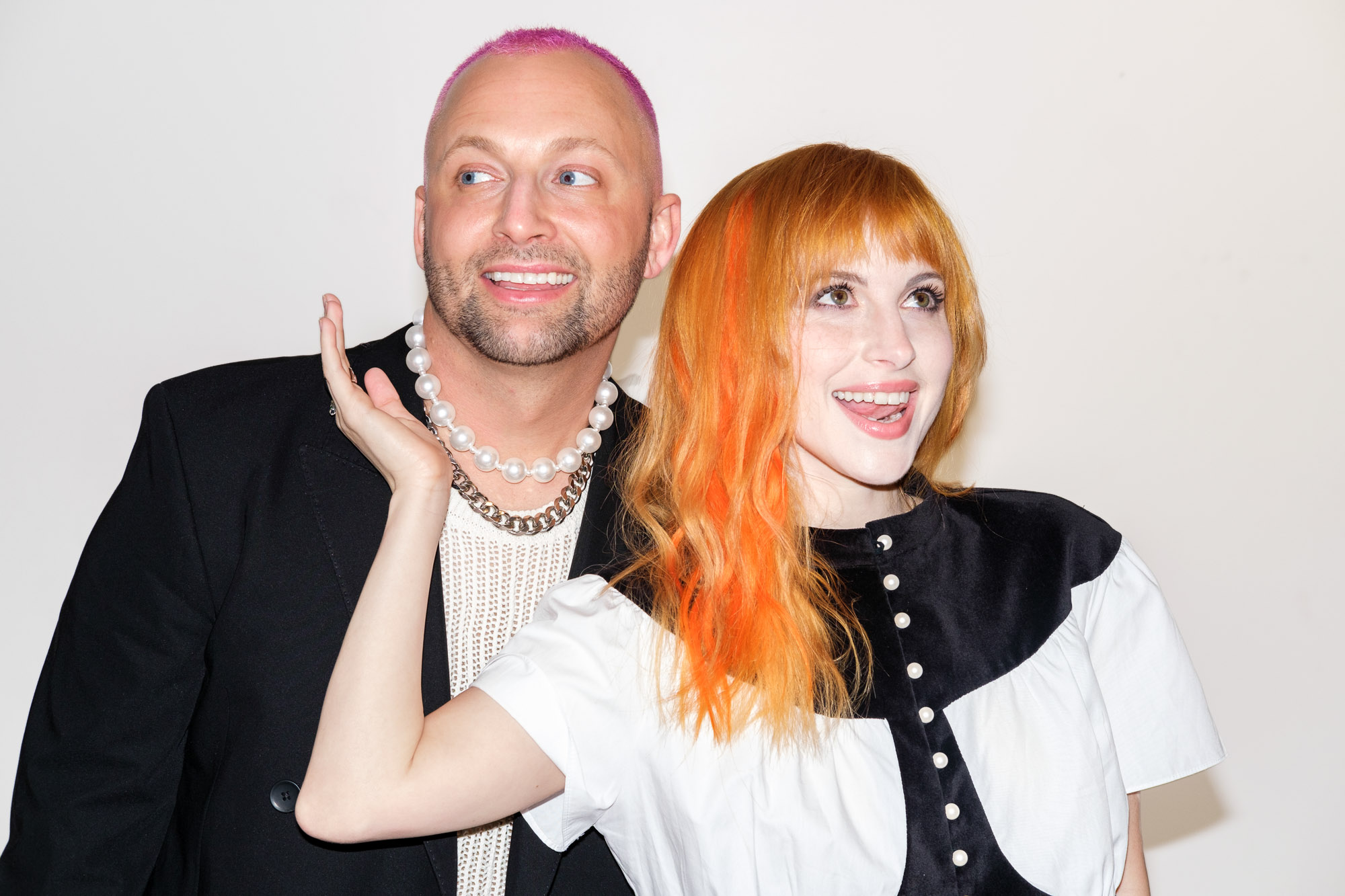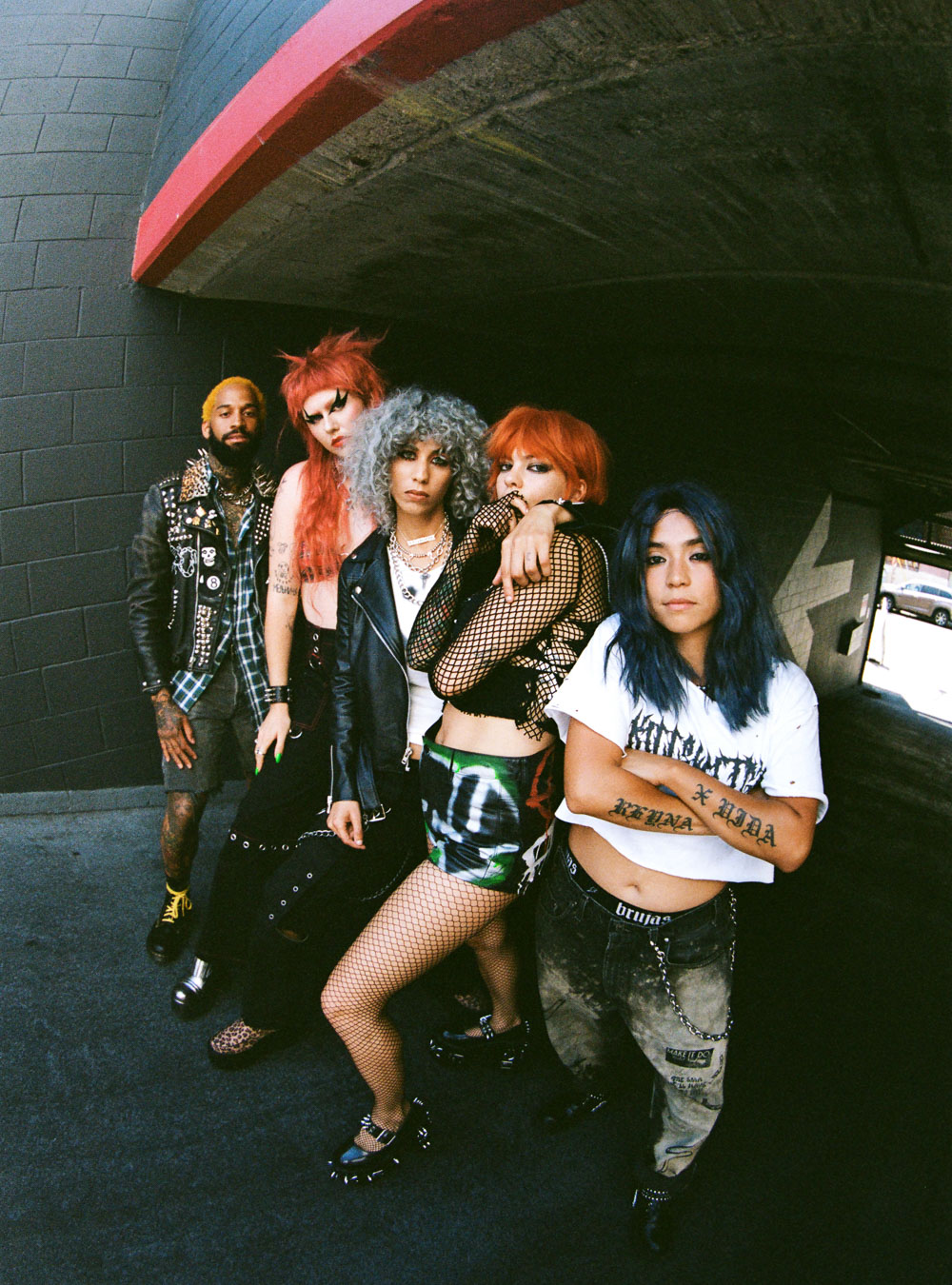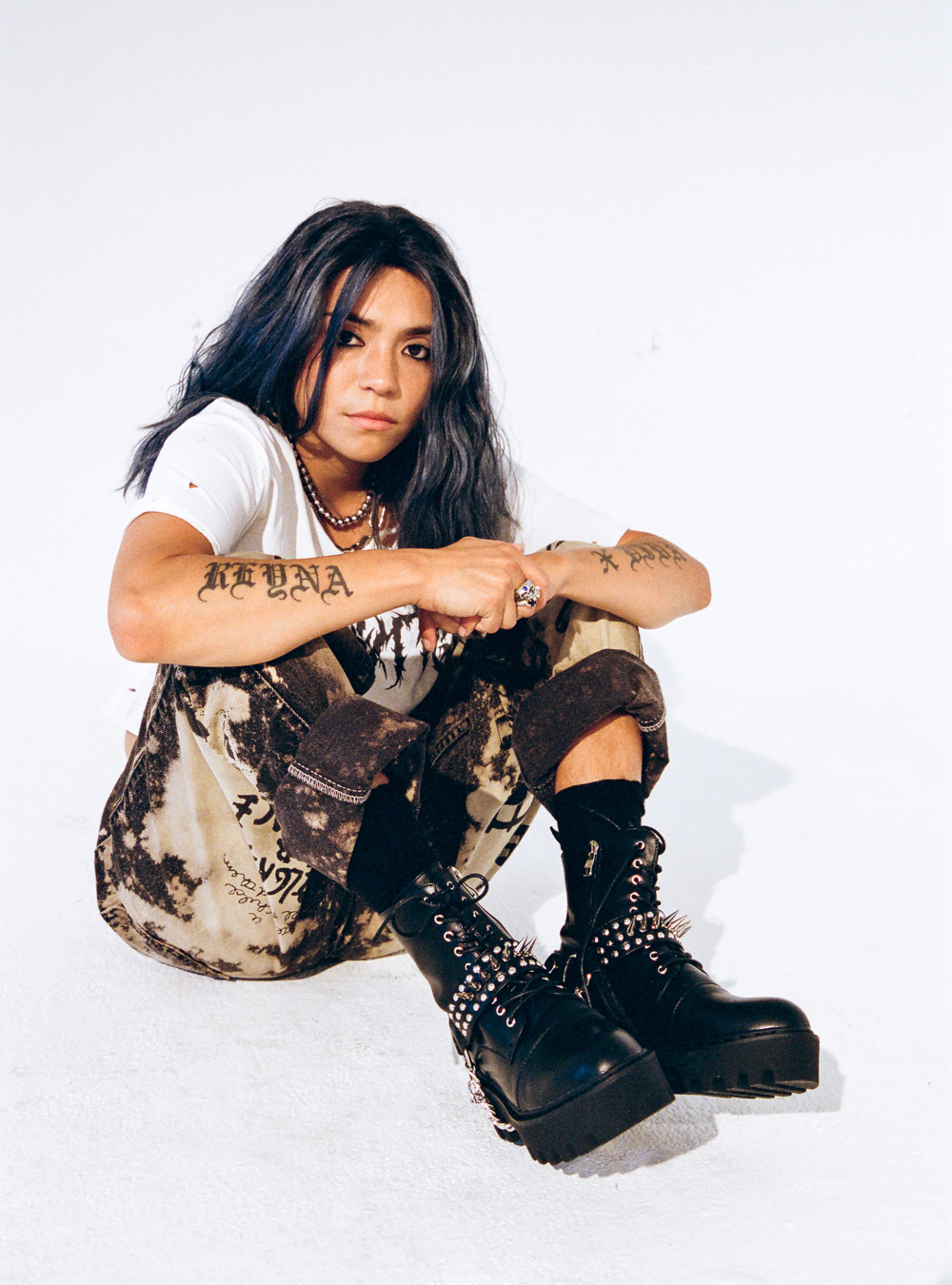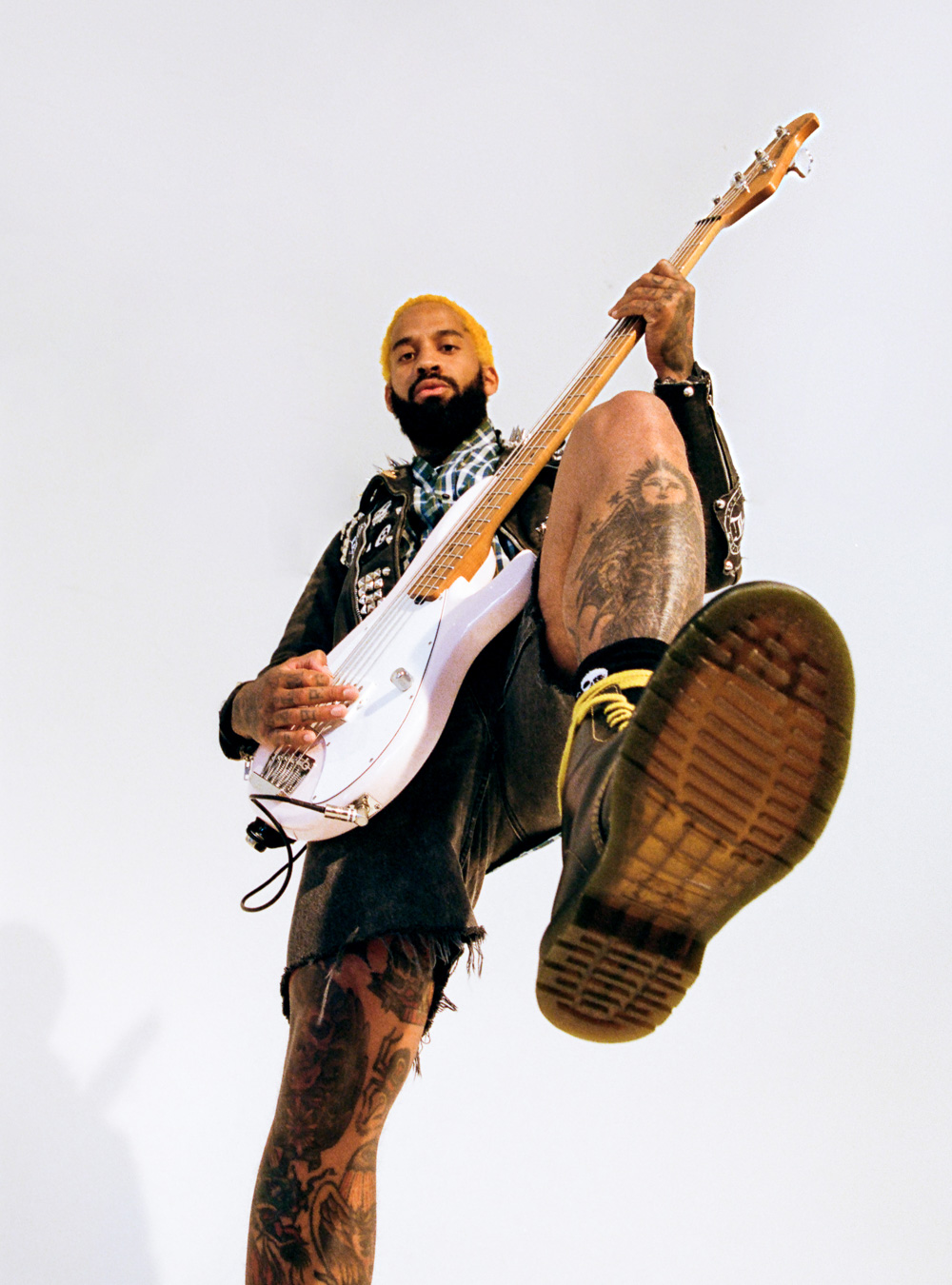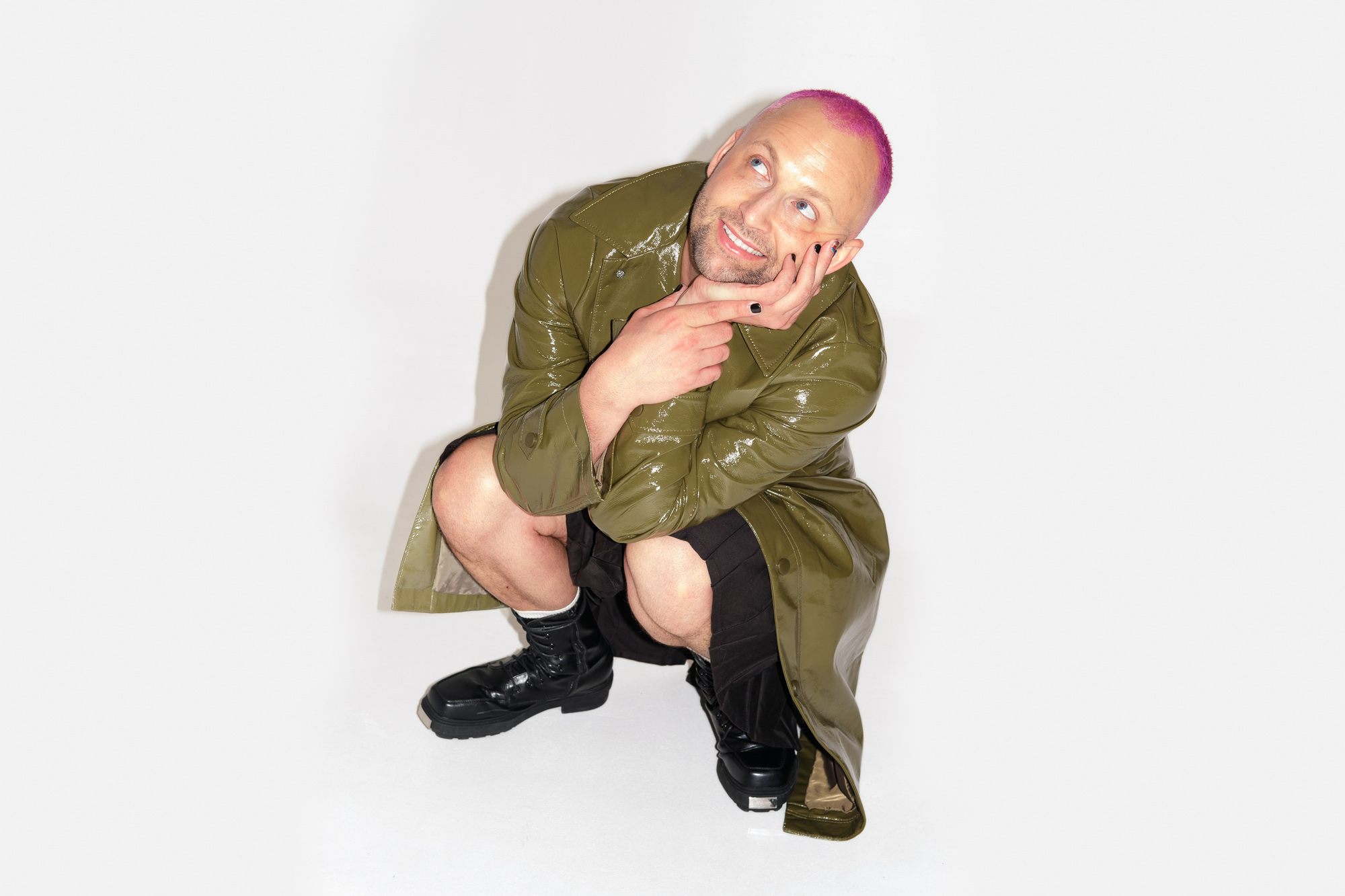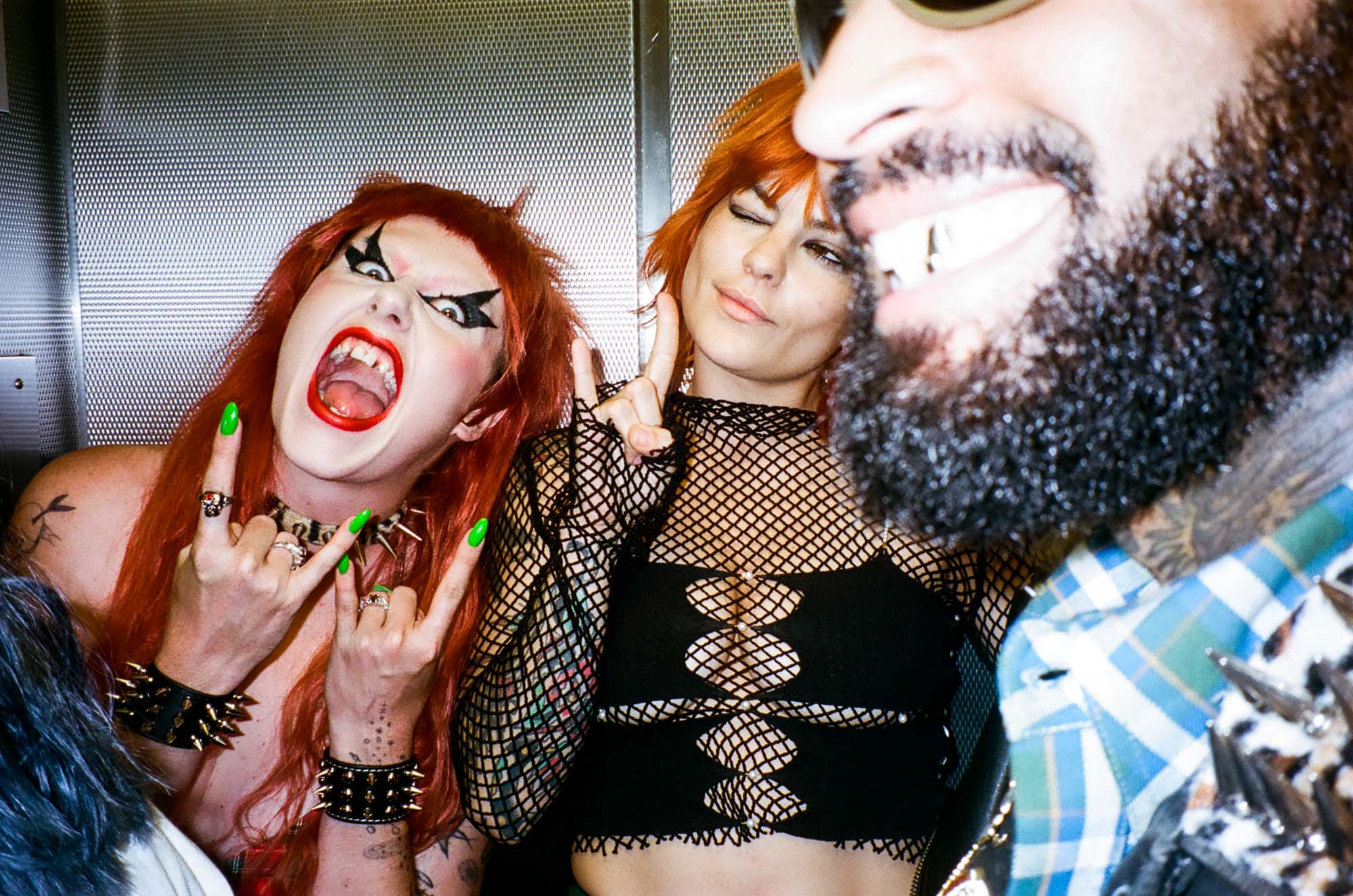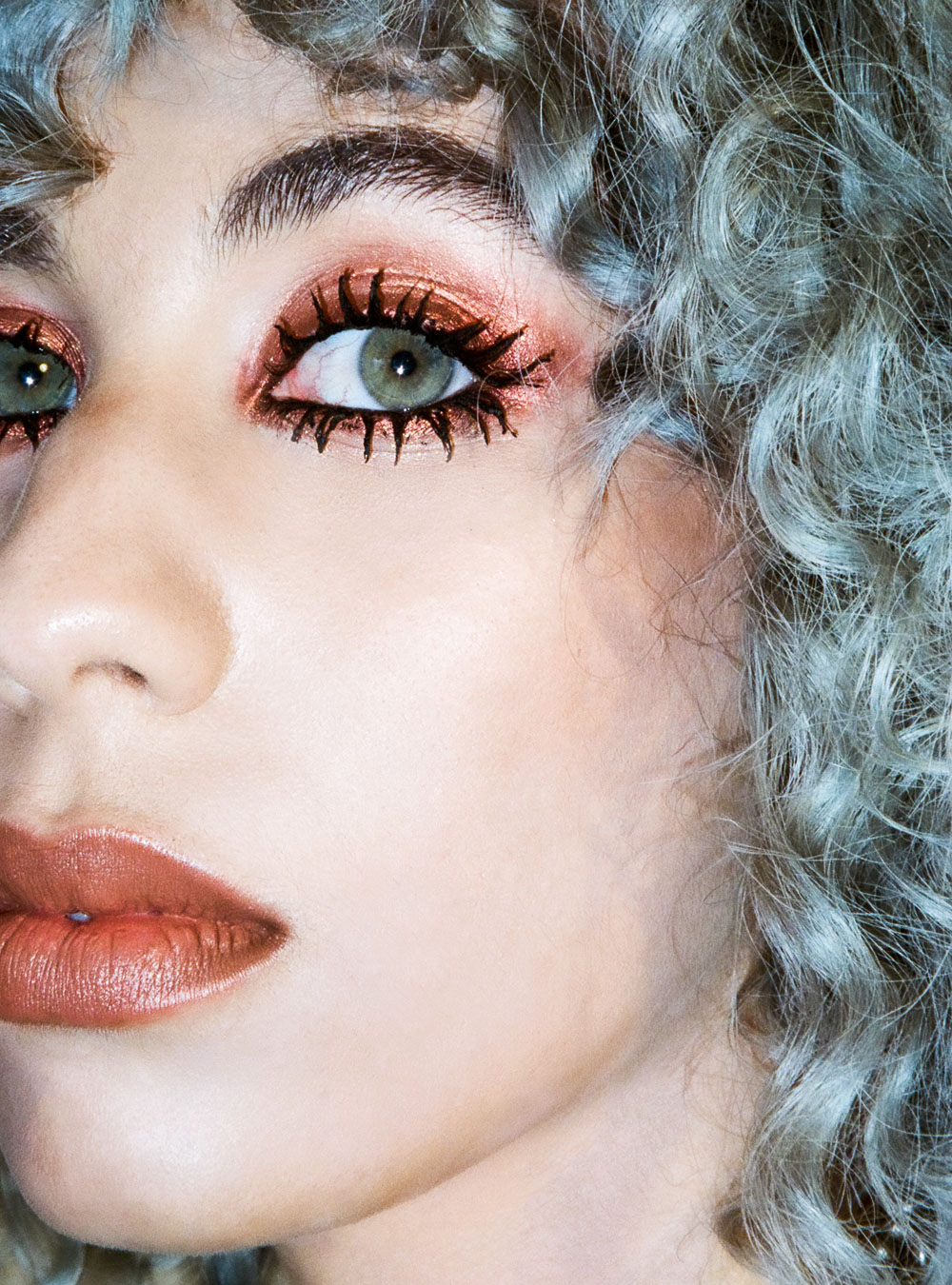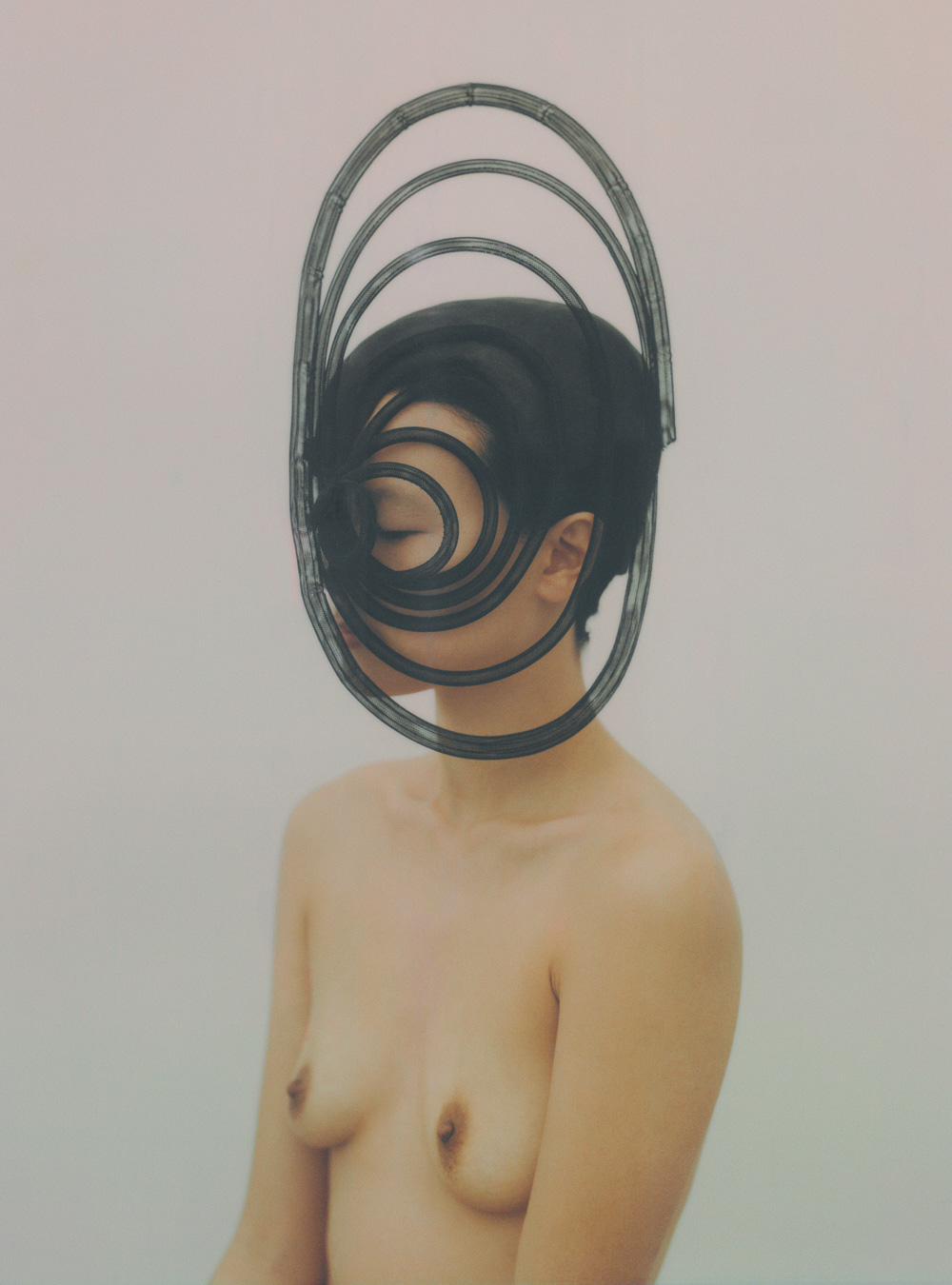- Good Dye Young
- Good Dye Young
- Good Dye Young
Photography: Courtesy of Good Dye Young
Interview: Katharina Lina
Special thanks to Hayley Williams + Brian O’Connor
PEOPLE: Paramore’s Hayley Williams campaigns for unbound self expression, and together with Brian O’Connor, the two continue to inspire another generation to be curious about their personal identity and courageous in their choices
“I love being orange again…that’s just me.” Hayley William’s signature shock of hot orange hair is synonymous with pop-punk iconography, her impassioned performances reflected in the bold colouring work of Brian O’Connor, William’s long term hairstylist and confident. The two realised the impact and potential of their joint creative forces following the success of RIOT!, Paramore’s second studio album. One of the album’s singles and an all-time favourite to date was Misery Business the video in which Williams sported the orange hairstyle, choppy and brazen — crafted by O’Connor — that would help catalyse a number of significant pop cultural shifts, including the cementing of Paramore’s presence on international charts, and defining a new type of alternative cool girl blueprint for those who were left behind in the post-y2k glitz-glam era. Her impact on the generation coming of age in the 00s cannot be overstated. An icon for alt kids all over the world, she influenced many not only through her style, but by helping to process life’s most complicated of emotions; from trauma, to love, to anger. For many, Williams is more than a performer, equally fearless and compassionate, standing side by side with the freaks and geeks she sung for.
“I was really enjoying the process of what it feels like to express yourself with hair colour. I was realising other people in the business saw it as an opportunity… I thought, ‘Well, if all these other people are trying to make money off of me, then we should be a part of this conversation.’”
In 2016, Williams and O’Connor co-founded their vegan hair dye brand Good Dye Young, building upon the principals of inclusivity, self-expression and a desire to normalise vibrancy as well as minimise the apprehension of those who hesitate to try something new. “We’re trying to show people that there are ways that you can switch it up with your look without sacrificing the health of your hair. The barrier is the fear but we’re trying to eradicate that with education.”
Currently GDY has over 50 hair dye products available with varying options for shades and longevity, many containing the riotous colours Williams is known for. “Let’s stop the drama surrounding vibrant hair colour. It doesn’t make anyone less-than or unprofessional or distract kids at school. I can’t believe it is 2023 and people still have beef with vivid hair colours”, Brian O’Connor, when asked about what he’d change about the hair and beauty industry.
Off the backs of Nicki Minaj and Lil Kim who popularised the contemporary use of rainbow-coloured hair and wigs, one can now walk down the street and see bright hair more than ever. Just 15 years ago, brightly coloured hair was widely associated with scene and emo kids, 40 years ago it was punks, but hair colouring was not always associated with society’s misfits. The fact is, colouring hair is an ancient practice. Historians gathered that as far back as in ancient civilisations, early iterations of hair dye were made of various ingredients that included henna, berries, and fermented leeches that would richen hair colour and cover greys. More recently in 1931 movie star and sex symbol Jean Harlow made headlines when the natural blonde suddenly sported blindingly bright white hair and starred in a film that would describe her new look: Platinum Blonde.
One could argue that the blonde of Harlow’s finger waves or the black hues of Cleopatra’s tresses can appear naturally in the world, unlike Billie Eilish’ 2019 lime green roots for example. But like most things, it’s not a black and white matter. From strawberry blonde and orange coppers, to deep Auburn browns, reds appear naturally in such a wide range, who could determine with certainty where the natural red spectrum stops and starts being unnatural? Equally, covering hairs that have naturally turned grey could be legitimately deemed as unnatural. At further examination drawing a line between natural and unnatural hair shades as a marker of professionalism and respectability quickly becomes an arbitrary task. We have to ask ourselves whether we, as a whole, are still subscribing to outdated ideas about social worth and the need to control people’s — especially women’s — bodies.
Can you tell us about how you first met when Brian jumped in for Hayley’s hairstylist on leave? And how did you go from client stylists to friends and then business partners?
Hayley: I liked Brian immediately. He was younger and that was cool to me. I loved the way he was dressed and I felt like we probably had a lot in common. Sometimes getting your hair done by a new person can be a little awkward and I think we handled that pretty well. It just took a few times for us to feel comfortable with one another. After getting to know each other and doing looks together, people were really taking notice of it. From there, it just kind of made more sense for him to come on the road and actually be at the video shoots instead of styling me a day before and traveling without him. It was when we started to tour together that we became really close to where it started to just feel like family. Now he can’t get rid of me. I also think any sort of creative work that you do in a group just bonds people really fast. So I’m thankful that we bonded over that because without our working relationship maybe we wouldn’t have ever gotten as close.
How do you maintain your relationship throughout all these changes and facets of life?
Brian: I think that we’ve maintained it because we’re, at the heart of it, real with each other. I don’t think that outside of Kolton [Brian’s fiancé] there’s anyone who knows me better. Family or blood related, there aren’t many things she doesn’t know that I’m doing. Now granted, most of my days are spent behind the chair working. But for the most part, I think we communicate really well with each other. I always say I’m in two marriages – I have my personal one with Kolton and then I have my marriage and working relationship with Hayley. We also just know how each other works. Communicating in that way is really easy and if one of us is short, or says something in a work-stress related way, we usually know where it’s coming from and it’s not personal.
What has your experience been like building and growing a brand from the ground up?
Hayley: Oh, Lord. It’s harder than you think and had we known how hard it is, we would have probably been too scared to try it. We really dove in headfirst and we’ve made a lot of mistakes along the way but we’ve also done things really, really well. We’ve been able to grow and we were lucky because we were given this opportunity and I think we’ve seized it. Growing a brand comes in waves. There are times where it feels like, “Oh, my God, are we going to make it through this season?” and I think that’s where our friendship really bolsters us. It makes us have some extra energy or extra strength and courage to face a tough season or a challenge at work. It’s hard but now we kind of pinch ourselves. Our team is built out really well. We feel really lucky to have a company that actually has a heart, has empathy and cares about the cultural things that Brian and I are passionate about. It’s been really really tough and it has taken a lot longer than he and I even would have expected for it to get off the ground but it’s very worth it.
What have been some of your most memorable highs and lows since launching Good Dye Young?
Brian: I think the biggest low for me outright is, and it could also be considered a high, is how launching a brand has taught me to be patient. I’m a very impatient person and it has made me realise that anything that is truly worth it takes a lot of hard work and time. I’m thankful because I feel like it has made me a better person and I’m realising it’s important to slow down and appreciate the here and now. I’m a big day dreamer – I’m always five years ahead in my mind and the vision that I’ve painted. Sometimes that gets me in trouble internally with myself. The biggest highs will always be doing the things that you never thought were possible. I never thought that Good Dye Young would be an option, or that I would co-own my own hair dye company. I just knew I wanted to do hair and I wanted to make it a career. There have been so many highs from it, too. I’ve met an incredible team of people that I probably wouldn’t have had in my life if it weren’t for Good Dye Young. We also just launched in both Target and Walmart, also have Sally’s and we started out on Sephora.com and in a few Sephora stores. I never thought any of this was possible. The highest part of all of this is that we’ve greatly impacted people’s lives, we’ve made a difference. We’ll leave something behind bigger than just ourselves in the end.
Over the years with hectic shoot sets and tours, business launches and campaigns, did you ever experience any wild hair emergencies?
Hayley: One time I asked Brian to dye my hair, like two different colours and then we played Good Morning America. The next day, we kicked off a tour and I wanted different hair. Mostly because I was having a raging internal existential crisis and horrible personal issues in my relationships. Long story short, my hair was hanging on for dear life because I had asked Brian to bleach it so many times. It was double processed, like three times in a week. Brian told me later, when we were much closer, that after the third dye, which we now call ‘Narwhal’, he had to cut inches off my hair and he went back to his hotel room and cried.
Brian: Like tears down my cheeks.
Hayley: Because he took inches off my hair.
Brian: ..and it was already short to begin with.
Hayley: To be fair, though, one of my favourite hairstyles I’ve ever had, like, I loved having short hair.
Was there a specific moment at which you decided to launch your brand together?
Hayley: I was approached about doing collaborations with brands pretty early on during the success of RIOT, which was not something I saw coming. A lot of these opportunities came from the work that Brian had done on my hair around the time that Brand New Eyes, our third album, came out with the band. We were going through a really rocky time as friends who had grown up together and gotten famous together. It was just such a whirlwind and it was really hard. I’ve always said if I wasn’t in a band, I would want to do something visually with style, whether that be hair or makeup or something else. Brian and I were becoming closer and I was really enjoying the process of what it feels like to express yourself with hair colour. I was realising that other people in the business saw it as an opportunity. I thought, “Well, if all these other people are trying to make money off of me, then you know, we should be a part of this conversation.” I knew there was an opportunity for Brian to be in the middle of this and to help drive the conversation within the culture. We wanted to talk about how expressing yourself through hair dye actually impacts people’s lives, their creativity and their mental health. Thank God it all worked out. Brian and I still to this day get to do looks for Paramore, the band still puts out records, we’re still touring, and we get to do Good Dye Young.
Freedom of self expression is one of your brand’s principles. Growing up, were you always able to express yourselves freely the way you do now?
Hayley: I know from when I met you [Brian] that you always did because you were wearing some fucking moon boots and camo shorts. And you were in Franklin, Tennessee where the band guys and I literally call the grimace from locals who think you don’t belong ‘Franklin face’ And I was like, I know he’s getting ‘Franklin face’ all the time. To me, that’s what actually drew me to feel comfortable with you.
Brian: That’s funny, to hear your point of view on that, because I feel like growing up in small-town Michigan I didn’t feel comfortable to be myself because I was in that environment. So, when I started working in Franklin and I met you [Hayley], I didn’t care because I didn’t know anyone. Also, at that time I had been out for a year or two and I just really stopped letting that weigh on me. And there was something very freeing about that.
Hayley: I think I subconsciously sensed that. Before I lived in Nashville, I lived in Mississippi and I did not feel like I related to anyone there. It’s not that I didn’t have friends. I loved a lot of people there. And, you know, I was a kid. So I had fun and all that. But I always dressed differently than everyone else. I always felt like there was just this urgency to get the hell out of where I lived. And so that might have been what I saw in you, the fact that you were out, you were expressing yourself, you didn’t really care, because like you said, there was nothing to lose. And I probably was just looking for more people like that.
Brian: It takes a community. It takes a person.
How did the pandemic affect your brand? Did you see an uptick in home styling?
Hayley: Oh Lord, thank God, people wanted to dye their hair during COVID.
Brian: I mean, selfishly, I think we’re one of the ones that actually excelled during the pandemic.
Hayley: Yeah, I felt shame about that.
Brian: Same, I still kind of do because there’s a lot of heavy darkness around a pandemic that claimed so many lives.
Hayley: We would have been done if people didn’t decide to have fun with their hair, the company wouldn’t have survived that.
Brian: Of course, it was an uptick, because there was no working in offices and the traditional ‘work attire’ went out the door. Kids were doing school remotely through a computer and hair colour was no longer an issue. I think that the influx was also due to people being stuck inside and looking for something to do. It was quick and easy to order online, get it delivered right to your door and you could do it in the comfort of your own home. At that time, there were no restrictions around whether it was your day-to-day job, your work, your schooling.
How would you describe the essence of the GDY client?
Hayley: I would describe our clients in a similar way to how I would describe our team. The people that work for us are highly creative. They’re curious and not really afraid of a challenge. I think about when I was a kid, I was interested in dyeing my hair and then suddenly turning into someone who was not only interested but loved it. I actually feel that it affected me in a positive way. It takes curiosity and it takes courage, for sure, but I think what’s nice is now there’s much less of a barrier to entry because of brands like Good Dye Young trying to show people that it doesn’t have to be scary. You can feel it out with the community behind you and with education in front of you. I think ultimately, it just comes down to someone who’s willing to be curious about who they are and who they want to be. And then really putting in some effort to try and find that person. I think it’s so much less about fashion and style. At that point it really just comes down to people being people and wanting to, self realise and self actualise.
Can you talk a bit about why having a vegan brand important to you?
Brian: Well, for the obvious reasons, animal cruelty…Need I say more? I think it’s very important to Hayley and myself. I am a huge animal person, I own a 17 acre horse farm. My fiancé is a horse trainer. We have two dogs, six cats, four of which are outside barn cats.
"When we live in such a world of science and innovation, there are better means than cruelly using an animal in any way in any sort of product. Period."
Hayley: It’s just a choice people have to make for themselves. We want our community to feel a part of this and to feel like they can support this brand because we’re not exploiting animals.
How would you like to see your brand develop in the next few years? And where are you each in your future dreams?
Hayley: I would love to see Good Dye Young develop into something that is way beyond just dyeing your hair. Hair is the crown you wear every day and it’s an accessory that you take with you everywhere, 24 hours a day, seven days a week, 365 days a year. It’s always there. But Good Dye Young is about inclusivity. It’s a community. It’s about what you’re feeling inside. It’s about showing the world who you are internally, outright. Some days, I feel louder and bolder. And some days, I want to recede and just get by. I know that there’s probably millions of people who feel the way that I do. So I hope that the brand in the next few years just continues to grow and be a safe place for everybody. Every human being can find themselves in this community and they can find each other through this community. The world needs a place where people feel safe together and if hair dye is what does it, then I’ve surpassed anything I could have ever dreamt up for my career by bringing people together and forming peace over dyeing your hair yellow.
Brian: I hope that we keep continuing to blaze a trail. I have been a licensed professional since I was 19 years old and I hope that we continue to make innovative, really cool, great products that not just our community and consumers but actual professionals look to and are inspired by. I hope that Good Dye Young becomes one of the leaders of bright vibrant hair dyes and we are able to speak to it in such a well rounded way. That’s all I can hope for.
How relevant is a specific colour of someone’s hair to the way people perceive them? Do you think there are still stigmas associated with certain colours?
Brian: Yes, absolutely. I think that having bright vivid dye hair somehow leaves you in a lesser social and economic demographic. People look at you as lesser than them or beneath them in certain ways. I think that it’s funny that hair cannot just be seen as fashion and can’t be seen as something that’s a part of your life at that moment. Hair is not forever. It can be changed and so rather than viewing it as the latest hot pair of sneakers or the coolest jeans, it’s viewed as a level in society. That view is stupid and it should be thrown out the window.
What do you think it is about hair that we attach emotional value to?
Hayley: We’ve put so much emphasis on the wrong things about hair. Dyeing your hair different colours shouldn’t be looked at as a distraction. It should be looked at as a strength. We should be able to express ourselves and not have projected onto us what someone else wants us to be. I think that culturally, we’ve still got a lot of moves to make in that direction. I’m hoping Good Dye Young can be a part of that conversation about not only treating your hair nicely, and knowing how to wear it, but just let it be what it is. There are people with alopecia or those who have lost their hair from chemotherapy, but hair can be such a catalyst of joy, as well. Whether that be a wig or extensions. To me, we’re in such a great position owning a company that’s all about hair, because it is emotional, it is very personal and we get to help people along that journey.
Brian, tell us about your background. How did you come to the decision to pursue a career in hair. Was it inevitable or did you stumble upon hair work by other means?
Brian: Growing up, one of my best friend’s mothers was a hairstylist. She did my entire family’s hair. From a young age, I always wanted the latest hair, whether it was colouring it, cutting it, growing it out, frosted tips, you name it. I remember how enamoured I was when I would hang out with my friend and we would be at her mom’s salon. I would hover over the chair, ask a million questions and sweep hair to the point where my friend would say, “Are you going to hang out with me or my mom?” By 12, my whole family knew that I wanted to do hair. If I didn’t do hair as a career and income, I would do it as a hobby for free, for any and every one who would let me. As long as I can remember, it was the only thing that I’ve ever been so passionate about on such an extreme level.
What do you love about hair and what are your hair pet peeves?
Brian: I love that hair grows back. It’s hair. Unless you have a genetic disposition that causes hair loss, hair grows out. What is the risk in whether you want to grow it down to be like Crystal Gayle or if you want to cut it off to have a Mia Farrow pixie? I think that goes into my biggest pet peeve when people tell me, “Well, I wouldn’t look good with short hair.” How can you have preconceived notions about what looks good on you, if you’ve never taken the risk to attempt it? How do you know that pink hair doesn’t complement your skin? So many people try to pigeon hole and tell others what they should or shouldn’t do with their bodies and that is my biggest pet peeve. There are no wrong ways to wear your hair.
Has your own relationship with hair changed as you became involved in the hair industry?
Brian: Mine’s developed into not being on my head anymore. As I’ve aged, it slowly just went further and further into the wind…
Hayley: I resented it for a little while because it was what I was known for. Now I feel like I can own it and it feels personal again.
Do you have any deep dark hair secrets or insights that you’re willing to share?
Brian: As good as you might think you are and as much as you might think you know about your craft, the second that you start to know it all, you should probably find something else to do. As long as I have been doing hair, I have still had moments where I have over-processed someone’s hair using bleach. Whether that was my fault or something that was going on internally with that client, I followed all the procedures the exact way. I’ve done plenty of bleach and tones, still had scary outcomes, and I had changed nothing about my approach. So don’t ever get comfortable in thinking that you know it all, because you really don’t, and there’s a surprise waiting around every corner.
What role do you think hair plays in the music scene? Who are some of your main reference points?
Hayley: With rock and punk music, there is a massive emphasis on your look. I don’t think that it should be minimised to a look. But I think that there’s a reason why we remember people like Bowie, Cyndi Lauper, Debbie Harry and Siouxsie Sioux. I can go on and on about people that aren’t even that mainstream that have still really impacted subculture and mainstream fashion. It’s the same thing when you go to school and you choose what to wear to class. There’s a part of you that’s always showing a side of who you are and what you’re about. I love being able to wear and show off the person that I feel that I am or what I’m about on the outside. Whether that’s hair, makeup, style, or my clothes.
We’ve always gone back to and looked at subcultural references and people that have been left of centre. Brian and I are really big fans of Paris is Burning, drag culture, and history. We’re also fans of Club Kids in New York City, the 80s, and Studio 54. These come up a lot when we get into each album cycle. This time, we’re looking at a lot of women from the UK from the late 70s and 80s. Whether they were socialites and they were famous for their style and the people that they would hang around, or because they were artists themselves. It’s really inspiring.
Favourite hairstyle you’ve done for Hayley?
Brian: Riot, Misery Business. Without that, there would be no friendship. The world wouldn’t have got to see what I saw.
We’re always on our phones, spoiled with stimulation. How do you still make an impact these days and what role has social media played in your careers both positive and negative?
Hayley: Our social media team at Good Dye Young is amazing and knows what people are looking for and what inspires them. There has been a lot of positive impact. It has grown our brand’s community because we’ve been able to reach so many people at one time through social media. The negatives are also really obvious. It’s obviously harming how we view ourselves and how we compare ourselves. I think it really affects young people’s development. It’s bothersome because it’s also such a great tool that can be used for any sort of growth you can imagine. I think we should try to keep it positive, we should try to listen and have open eyes and ears, open hearts, so that way we can have an actual relationship with our community. We should try to put positive things out there into the world that show that you can have fun with the look that you want to create and you can be who you want to be. Sometimes I wish that comments were never a thing. I wish it were just about people being so proud that they have to share it and nobody’s really asking for input from anyone else. I wish it had just ended with being able to post images and then no comments.
With climate change, inflation and pandemics and wars, feelings of doom and gloom have been all around us. What keeps you hopeful and excited for the future, what invigorates you?
Hayley: I have a lot of climate anxiety. I have a lot of anxiety about where we’re at as a country. At the end of the day, I rely on the community around me, the people that I can impact personally and how they can impact me as well. I think it has become more important than ever to have boundaries and to have a safe space among your friends and the family that you create. Whether that be family of origin or your chosen family. I think we all have to rely on the people around us more than ever and that’s really the only thing that keeps me positive some days.
- ANTHROPOLOGY OF HAIR
- ANTHROPOLOGY OF HAIR
- ANTHROPOLOGY OF HAIR
- ANTHROPOLOGY OF HAIR
- ANTHROPOLOGY OF HAIR
